
As DVDs externally store their data on a disc, they can get scratched easily and this can impact the data. All of us have been there. When you lend copies of your beloved DVDs to a friend, most of the time the discs come back to you like they are used to pry roof shingles. Sure, you can go to the market and buy another one but this is going to cost you precious dollars. Luckily, a few techniques are provided for you to fix scratched CDs and DVDs which you can give a try before you throw your CDs/DVDs and cast off your so-called irresponsible friend.
In our current time, some manufacturers of discs develop discs that are resistant to scratches. This is intended to eliminate the need for repairing them. Professional companies advise people to discard scratched discs. However, if you are interested in the methods on how to fix scratched CDs and DVDs, keep reading this article. But first, let us define what CDs and DVDs are and discuss how scratches affect your discs and some things you should know before trying to fix scratched CDs and DVDs.
Contents Guide Part 1: Why Need to Fix Scratched CDs And DVDsPart 2: 5 Rules to Remember Before Repairing Your Scratched DiscsPart 3: 3 Techniques on How to Fix Scratched CDs And DVDsPart 4: How to Convert Your Ripped Videos Using DumpMediaPart 5: In Conclusion
A compact disc (CD) is a disc molded in plastic that stores digital data. This data is read from the disc using a laser beam.
A digital video disc (DVD), on the other hand, utilizes laser technology in reading the digitized data which has been saved on it. Since DVDs use digital formats, they can be used to store any type of data like images, movies, or texts.
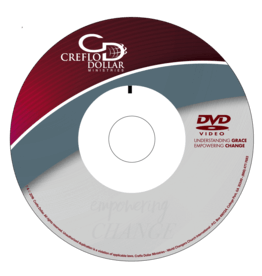
CDs and DVDs constitute layers. The top layer is a plastic where the disc’s label is written on its surface. A bunch of data is saved on the discs as zeroes and ones. When data is printed on the disc, a laser is used to burn small pits to the plastic making the disc’s surface full of flat surfaces (referred to as lands) and various pits.
Beneath these is another layer made from reflective aluminum. When a DVD or CD player reads discs, the player courses a laser along with them. The laser can detect whether land or a pit is encountered before the layer of aluminum will send back the reflected laser onto the player.
The worst enemy of discs are scratched and whether the scratch is repairable or not, it depends on the location of the scratch on the disc. If it is located on the top (the shiny section of your disc), the disc is unfortunately irreparable and all of the data is gone. If the scratch is located at the bottom (the plastic section of your disc), the disk might be repaired by polishing and resurfacing it.
Lastly, the disc’s bottom layer is made from polycarbonate that is intended for the protection of the data from damages. When this precautionary layer gets scratched, the path of the laser is altered which hinders the laser’s ability to read the lands and the pits accurately. To fix scratched CDs and DVDs, the scratch must either be buffed out or filled with a substance that is transparent. In this way, the laser is able to course through the data.
Before we proceed, you should take into account that the foremost way of dealing with scratched discs is actually by simply replacing them either in the shop where you have bought the discs or by contacting the manufacturer. For instance, most publishers of video games will send a new copy to you in return for your damaged copies with a nominal fee.
Furthermore, you should be aware that all of the techniques we will be sharing with you later have a very definite chance to further damage your discs even if you do them carefully using our guides.
These techniques will not also work on Blu-ray discs as these discs are using a more resistant coating that is not prone to scratches and damages. This is a good thing but the only downside is once the disc is scratched, the Blu-ray disc generally becomes unusable which means you have to replace it.
Minor damages can be corrected using microfiber cloths, but the layers and the density of the data prevent the options listed below to work particularly well and are even not advisable for Blu-ray discs. Though the error-correction feature on some Blu-ray disc players can help these players ignore scratches.
It is also best to back up the data on your Blu-rays, CDs, and DVs by making a copy on your hard drives which is also referred to as ripping. This keeps your movies and music safe and viewable for a long time, provided of course that your external drive would not be damaged. If you want a physical copy, you can easily burn the data onto rewritable discs. In case you want to convert your ripped videos to a different format, we also have a tool that we recommend for that, DumpMedia Video Converter, which we will be discussing in the next section.
Although we will be giving you techniques on how to clean and resurface your discs, it is crucial to remember some fundamental rules if you don’t want to give yourself a hard time when you fix scratched CDs and DVDs.
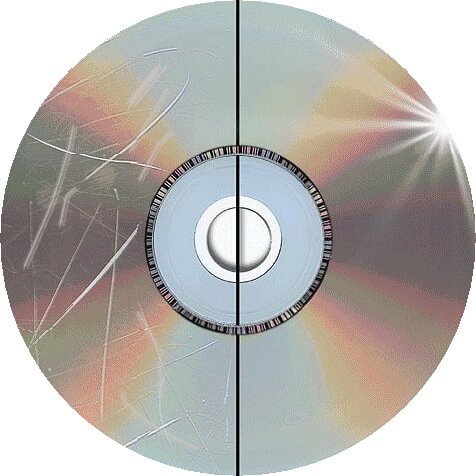
It is not surprising that it is easy to alter the fragile data that was imprinted on the polycarbonate layer of discs. Both oil and grease are known for causing issues on playback even if no physical signs of damage are visible on the disc. But still, it is better to put on latex gloves if you have them.
This is the most recommended way of cleaning your discs as it gives you a firmer grip while you are cleaning and it prevents damaging of any data encoded on the layer of polycarbonate beneath it. This is because the data is imprinted in a spiral manner on the disc-like in vinyl records.
Since the disc is spinning very fast, the player must have the ability to compensate for the data’s missing bits during its course. And if a scratch is running straight out away from the disc’s center to its edge, the algorithm can capture the error easily and is able to automatically fix it.
A tray-loading drive is able to read scratched or damaged discs more likely than a slot-loading drive. So if it is possible, it would be a better idea to utilize this kind of drives when you try salvaging a disc in order to lower the factors at play.
Since the layer containing the imprinted data on the disc’s polycarbonate exterior is very close to the disc’s top layer, dents and scratches on its label can result in errors in the reading process in a similar way a dent in the disc’s reflective exterior can. So ensure that you are going to store your discs in spools or cases. Also, handle your discs by their inner ring in order to prevent damage on the data.
This may sound silly to you but the best method of repairing your discs is not scratching them in the first place. But when you use good spools and cases, the possibility of damaging your discs can be significantly reduced which can save the hassle of repairing.
Now, this is the messy part. If you have reached this section of our comprehensive guide, it probably means that no other alternative was able to work. If you are able to find one computer that can read your disc, then you can rip the data and burn it to a different disc so there is no need for you to agonize about the scratches on your old disc.
But if the scratch on your disc is too terrible on its data layer, then the disc’s reflective layer may have been permanently damaged. In this situation, you might get some use from your damaged disc through the replacement of the scratched material with a comparable one so that the disc’s working portion will become readable again.
To do this, you can utilize various materials. Some of these are effective but some have been born out of common misconceptions and rumors. Some of these are:
All of these have been believed to work in repairing scratched discs and they have a common property - oil.
The oils contained in these materials are able to help in filling in the gaps caused by scratches even after they have been wiped. Furthermore, these oils create paths than can be traveled by the laser to read the data.
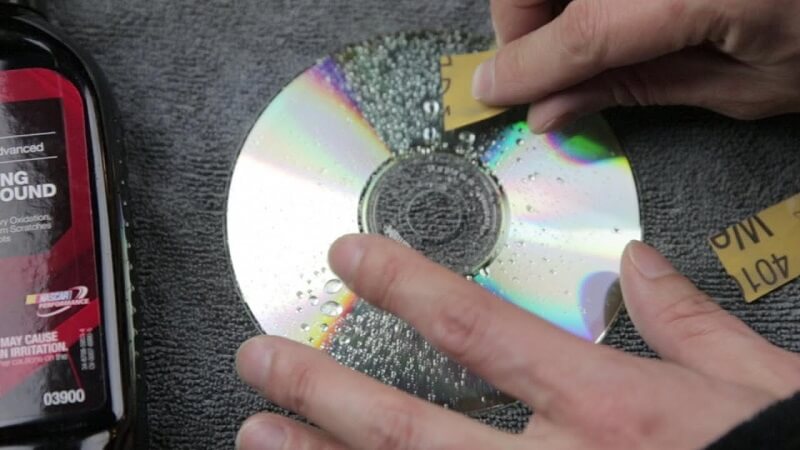
Surprisingly, the budget pad of Mr. Clean can be useful when talking about how to restore the proper finishing of optical discs even though their products are focused on household cleaning. Typically, you dampen the magic eraser but when you fix scratched CDs and DVDs, the magic is rubbed onto the disc’s reflective surface dry. Again, always move in a straight line starting from the disc’s center and outwards. This can smoothen some of the disc’s scratches on its reflective surface while not affecting the imprinted data underneath.
The magic eraser was made of melamine foam which is the same materials used in the insulation of heat and sound. So the material’s unique properties are taken advantage of rather than the chemicals in cleaning surfaces.
The basic idea is the foam functions as an abrasive, similar to sandpaper, and might smoothen the disc’s outer layer resulting in a smooth disc surface that is readable. Imagine it as a pumice stone rubbed against your heel’s rough skin. Rub the stone to your heel and you will surely have dead skin cells falling off. However, when you rub too much, the important cells underneath will be taken off. So be really careful that you would not be rubbing the magic eraser too vigorously towards the disc. Else, the layer of data underneath will be damaged.
By this time, you should have already asked help from a professional to save your damaged discs if you’re really concerned. Nevertheless, if you are still dedicated to watching your damaged disc, you can try to heat it slightly.
Polycarbonate materials have very low melting points and are very malleable when applied even with only a little warmth. Your desk lamp would be doing fine. All you have to do is to hold your disc through its ring in the middle to the lamp’s bulb. There is no need to flatten or bend the disc as we are only hoping for the little amount of heat to correct any small scratches to the encoded data to make reading the disc easier.
DumpMedia Video Converter is an all-in-one video downloader, converter, editor and video enhancer software. It is a very useful tool for video download and conversion processes and you can pretty much do anything with it. Furthermore, it is easy to use and user-friendly.
In this section, we will show you a step-by-step guide on how you can convert your ripped videos to your desired format below.
Step 1. Launch the DumpMedia application.
Step 2. Click the Add Files button located at the top-left section of the interface.
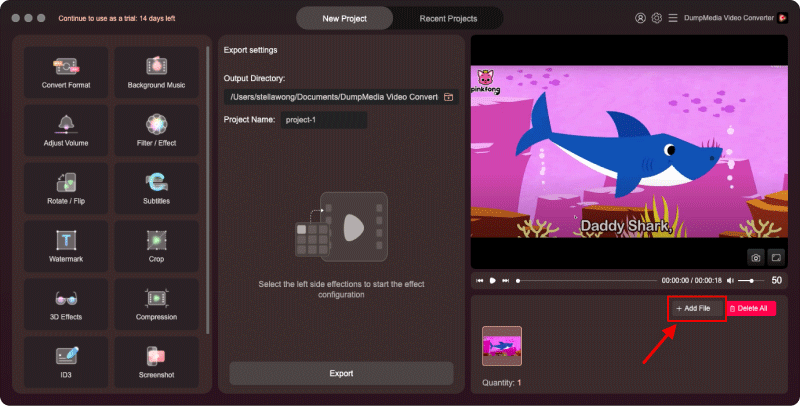
Step 3. Browse and select the files you want to convert.
Step 4. Click the "Convert all tasks to" located at the top right.
Step 5. Select your desired format.
Step 6. Browse your computer to the desired destination folder of the converted files.
Step 7. Click on the Convert button to start the conversion of your video.
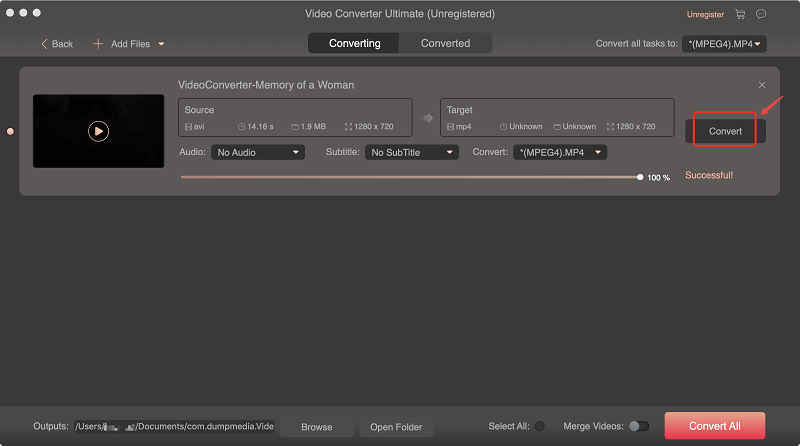
Step 8. Wait for the conversion to complete.
Step 9. Click on the Download button to start downloading your video file.
Step 10. Navigate to your desired output location when a new window appears.
Step 11. Click on the Save button.
Step 12. Wait for your video to finish downloading.
In this article, we have discussed how scratches affect your discs and we recommended a conversion software, DumpMedia Video Converter, which not only can use to convert your ripped videos from your scratched CDs and DVDs, but also convert other many formats. (For example, you can convert videos in FLV format to MP4.) Then we gave you five rules that you need to remember in handling your discs and before you repair them before we proceeded to the three techniques you can do to fix scratched CDs and DVDs.
Given our comprehensive discussion about proper handling of your scratched discs, we hope that you were able to learn a lot from this article.
